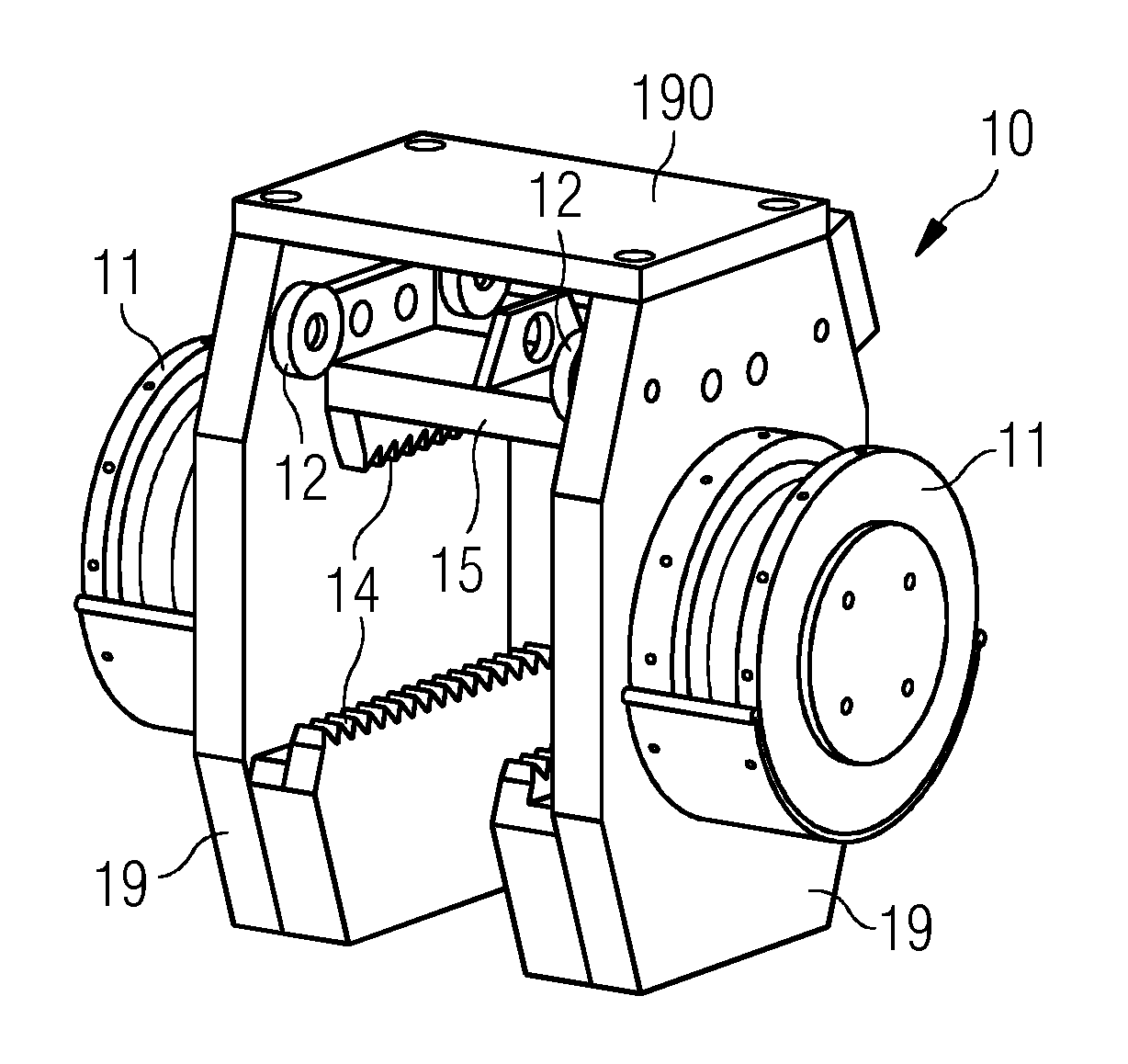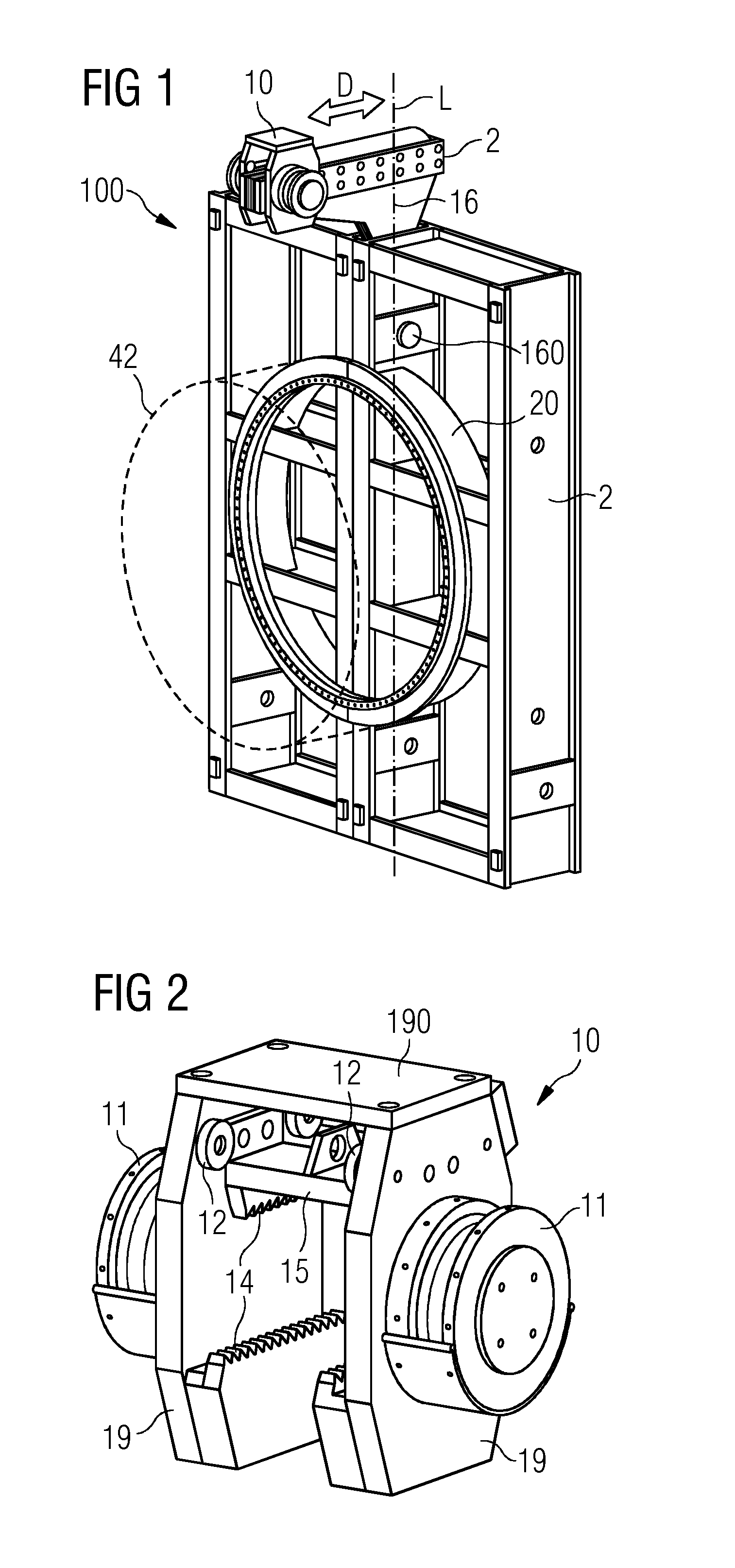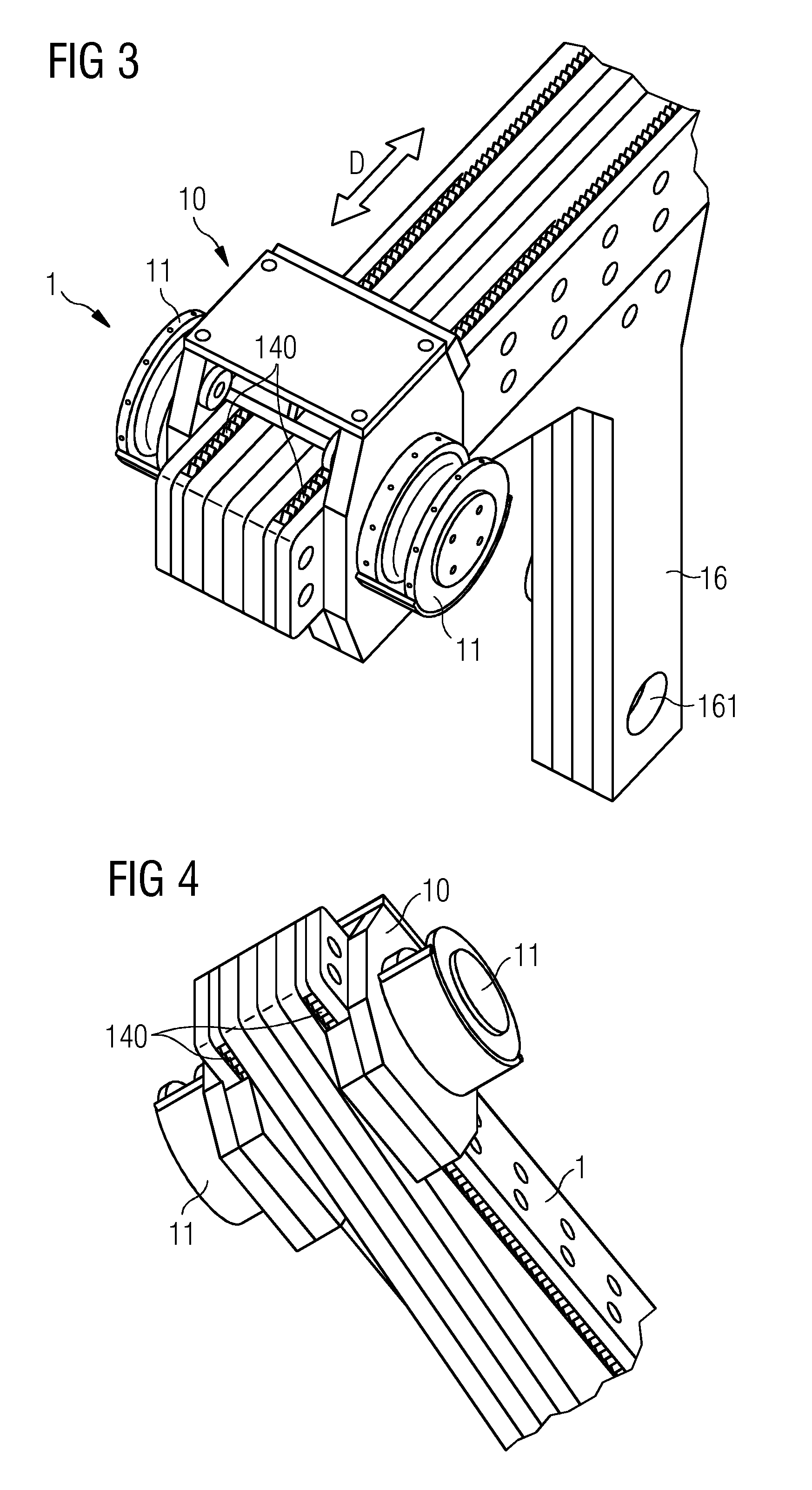Lifting bracket
a technology of lifting brackets and brackets, which is applied in the direction of lifting devices, motors, wind energy generation, etc., can solve the problems of unfavorable wind turbine operation, so as to increase the efficiency of wind turbines
- Summary
- Abstract
- Description
- Claims
- Application Information
AI Technical Summary
Benefits of technology
Problems solved by technology
Method used
Image
Examples
Embodiment Construction
[0036]In the diagrams, like numbers refer to like objects throughout. Objects in the diagrams are not necessarily drawn to scale.
[0037]FIG. 1 shows a lifting assembly 100 according to an embodiment. The lifting assembly 100 comprises a lifting bracket 1 rigidly connected to a load 2, 42 such that these elements 1, 2, 42 essentially form a single entity 100. The load 2, 42 to be lifted comprises a wind turbine generator 42 (indicated by the broken line) securely mounted onto a generator transport frame 2. The wind turbine generator 42 can have been mounted onto the transport frame 2 at its point of manufacture, and transported in this mounted state to a wind turbine assembly site. This is done so that the generator 42 is protected from damage and deformation during the potentially hazardous transport and assembly stages. To this end, the transport frame 2 comprises a ring-shaped construction 20 or generator ring 20 that matches a diameter of the generator 42.
[0038]The lifting bracket...
PUM
 Login to View More
Login to View More Abstract
Description
Claims
Application Information
 Login to View More
Login to View More - R&D
- Intellectual Property
- Life Sciences
- Materials
- Tech Scout
- Unparalleled Data Quality
- Higher Quality Content
- 60% Fewer Hallucinations
Browse by: Latest US Patents, China's latest patents, Technical Efficacy Thesaurus, Application Domain, Technology Topic, Popular Technical Reports.
© 2025 PatSnap. All rights reserved.Legal|Privacy policy|Modern Slavery Act Transparency Statement|Sitemap|About US| Contact US: help@patsnap.com



